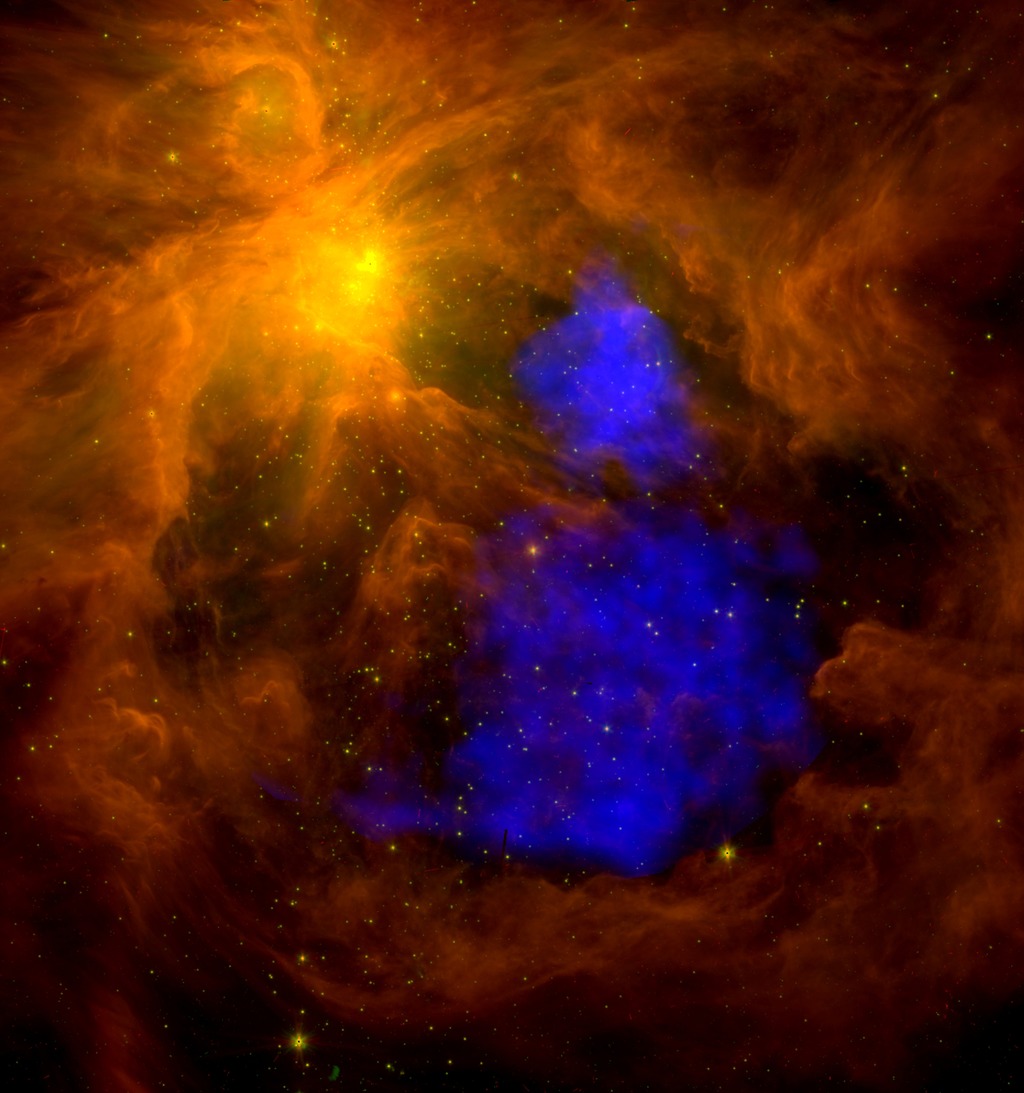
Credit: AAAS/Science (ESA XMM-Newton and NASA's Spitzer Space Telescope)
Observation • November 30th, 2007 • sig08-001
sig08-001
Right in time for the festive season, this image of the Orion nebula combines NASA's Spitzer Space Telescope infrared light with X-ray light to reveal a huge cloud of high-temperature gas resting in a spectacular nearby star-forming region, shaped somewhat like the silhouette of Santa Claus. An early present for astronomers, the cloud suggests that hot gas from many star-forming regions leaks into the interstellar medium.
The Orion nebula is the nearest dense star-forming region to Earth that contains stars much more massive than the Sun. This newly-discovered gas cloud is composed of winds blowing from these high-mass stars that are heated to millions of degrees as they slam into the surrounding gas.
"There is one star in particular that dominates the nebula", says Manuel Gdel, Paul Scherrer Institut, Switzerland, who led the team that discovered the gas. The star in question is theta1 Orionis C, a giant star around 40 times mass of the Sun, with a surface temperature of 40,000C. Gdel and his colleagues think that the violent collision between the wind from this star and the surrounding dense gas is largely responsible for the newly-discovered hot gas cloud.
The high-temperature gas fills a region of the nebula that appears to be a huge cavity in optical and infrared images. The new observations, taken with XMM-Newtons European Photon Imaging Camera (EPIC) camera, suggest that astronomers are seeing only a particular portion of the gas. The X-rays from this portion escape absorption by patches of cold gas covering much of the front of the Orion nebula.
The surrounding pattern of absorbing clouds gives the detected gas its Santa Claus shape, with his prominent hat outlined by the northern gas bubble. In its entirety, the hot gas probably fills the whole nebula.
About the Object
- Name
- Orion Nebula • Messier 42 • M42 • NGC 1976
- Type
- Nebula > Type > Star Formation
- Distance
- 1,270 Light Years
Color Mapping
| Band | Wavelength | Telescope |
| Infrared | Spitzer | |
| undefined | XMM-Newton |
Astrometrics
- Position (J2000)
- RA =5h 34m 50.4s
- Dec = -5° 34' 2.4"
- Field of View
- 42.4 x 45.3 arcminutes
- Orientation
- North is 359.9° left of vertical



